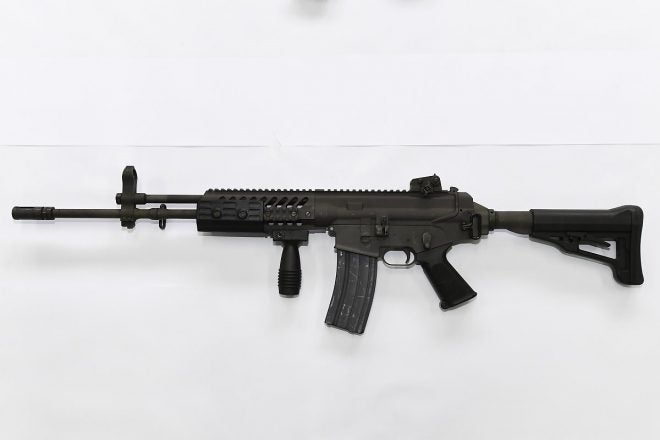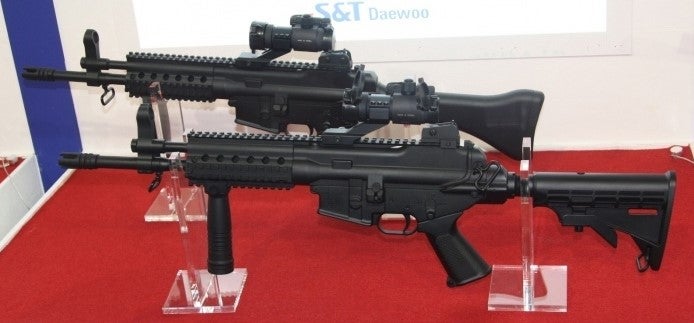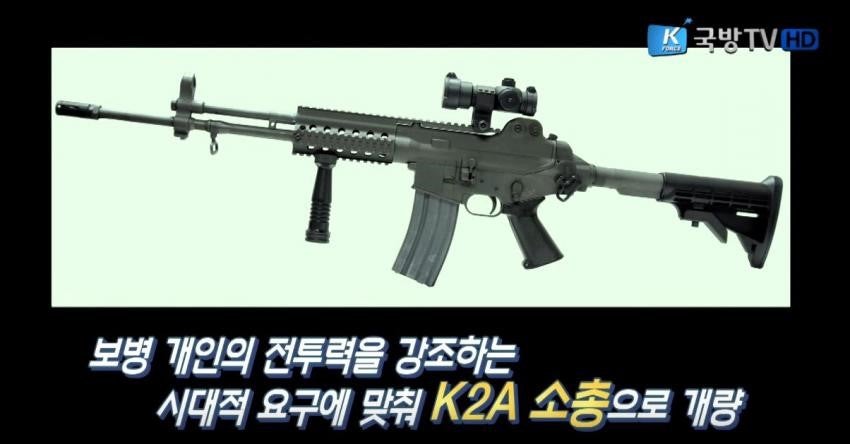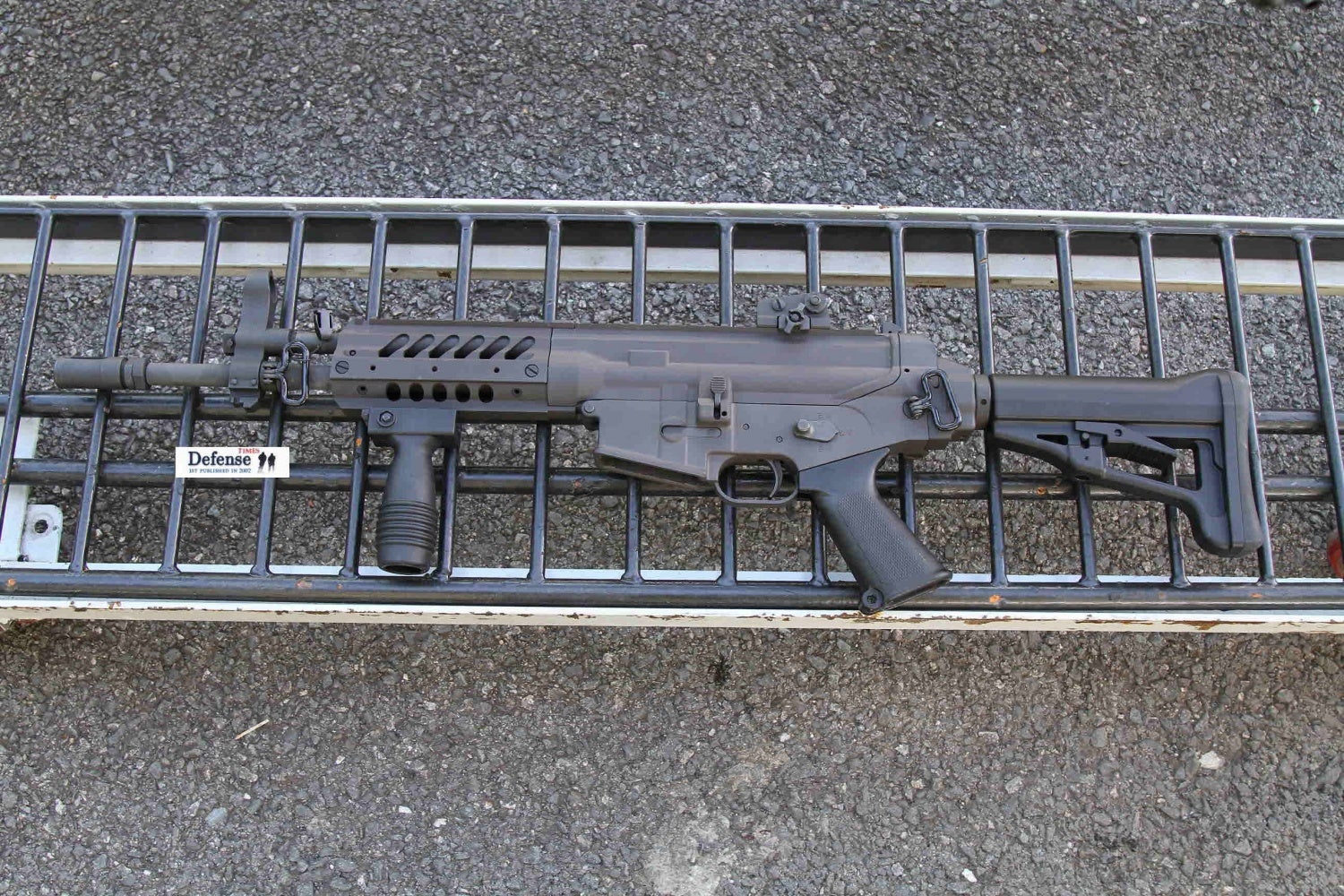Hang S. has contributed this post to TFB covering the history of the K2 rifle and various attempts at upgrading it from 2005 until today. This is Hang’s first post for TFB.
Failure of XK-8
In 2003, S&T Motiv (previous known as Daewoo Precision) started to develop a bullpup rifle chambered in 5.56x45mm NATO with ADD (South Korean government entity) technical support. Because maintenance costs and reliability of the K1 were started to deteriorate due to the constant service of the rifle after 20 years of mass production. So the S&T Motiv hoped South Korean Defense Forces could adopt the XK-8 as the next generation rifle and wanted to mass-produce it to replace the K2 rifle in the early 2000s.
Rumor has it that this rifle is only a bullpup version of K2 like CR21. However, it is a tapper type short stroke piston bullpup rifle. There is no relationship between the K2 and this rifle.
In 2005, the S & T Motive completed the design of the XK-8 rifle and asked if the Korean Ministry of National Defense could hold a field test. However, Ministry of National Defense didn’t have any interest in this bullpup rifle and refused to administer such a field test. At the time MND was thinking about the K11 as a new generation infantry rifle.
K11 rifle procurement issue and K2 rifle improvement issue
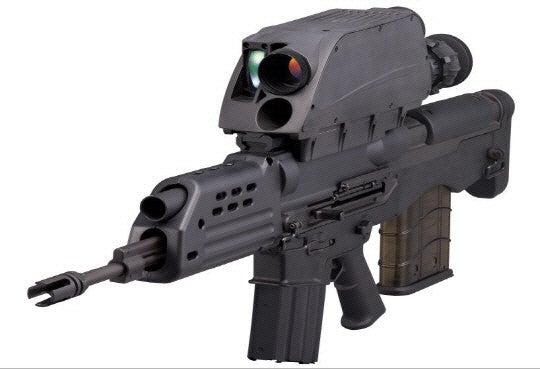
Figure 2. K-11[2]. This is K11. Upper barrel is for 20x28mm airburst round and lower barrel is for 5.56x45mm NATO round. The attached optic is a combined laser rangefinder (rectangular lens), 2.2x scope (upper circle lens) and thermal image camera (lower lens). A controller is placed in handguard and in front of the magazine well. The 20x28mm airburst round uses a manually repeating system via a bolt action. Rifle part uses direct impingement to cycle rounds. (http://www.edaily.co.kr/news/news_detail.asp?newsId=02368166609439440&mediaCodeNo=257&OutLnkChk=Y)
The plan for the K11 rifle was to give the infantry a weapon similar to the US Army’s OICW program. The rifle consisted of a 20x28mm airburst grenade launcher, 5.56mm rifle and Fire Control System (FCS) with a 2.2x thermal imager, optic scope, and laser rangefinder. This rifle can connect to a head mount display like the FELIN system and link to a C4I network known as TICN (Tactical Information Communication Network). However, in 2011 when this rifle started mass production, MND faced too many issues. First, acquisition cost was too expensive (15 million KRW = 14,000 USD). Second, the reliability of 20x28mm round system was unstable. There were several explosive accidents during testing. The third generation of FCS has been a problem and still needs to be fixed. MND changed the plan of the K2 replacement to K2+K201(40mm grenade launcher) replacement and suspended the acquisition program of K11 because of the FCS problem.
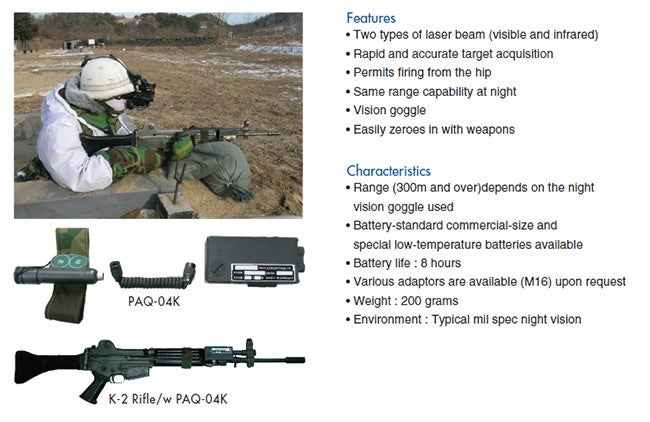
Figure 3. PAQ-04K[3] Target designator for Korea Army. This ATPIAL is installed on the barrel by an adapter and the battery is placed in the switch. Every soldier who used the pointer complained about low reliability and quality. This ATPIAL cannot hold zero during shooting or airborne training. Battery life is very short and the cable between switch and laser is too weak. (https://www.kdia.or.kr/eng/4/1/memProduction_view.do?production_id=20141002151625519100)
In 2006, the South Korea Army started to mass-produce a new ATPIAL called PAQ-04K. However, this acquisition program was suspended by corruption which was related to the reigning president’s relative. So MND chose a red dot sight as a day and night aiming device, purchasing 33,000 units.
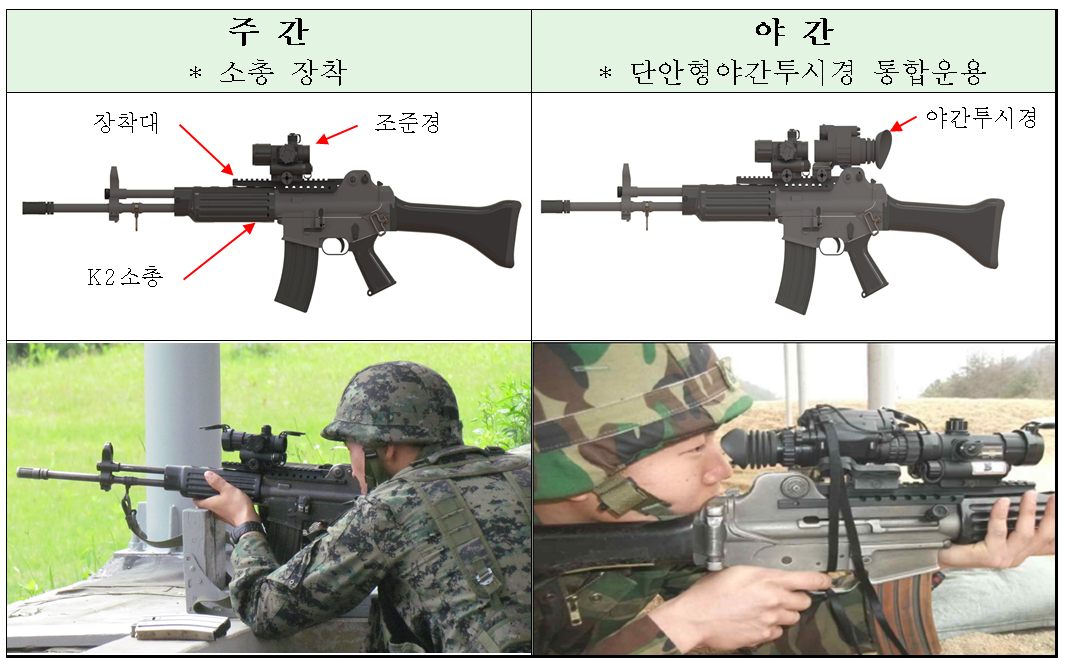
Figure 4. PVS-11K[4][5]. In the daytime, the PVS-11K is used as a normal red dot sight. During periods of low light, PVS-04K is co-witnessed with the PVS-11K. That’s why MND choose this red dot sight as a day and night aiming device and replace PAQ-04K. The author still doesn’t understand why MND did this. (http://bemil.chosun.com/nbrd/bbs/view.html?b_bbs_id=10159&pn=6&num=44507)
The supplier chosen for the day and night aiming device was D.I Optical and the red dot sight was called PVS-11K. The PVS-11K was delivered with a Picatinny rail kit which mounted to a screw hole for the L2A2 scope. During the use of the sights, users and manufacturer s pointed out the following problems.[14]
– The old K2 rifle is worn out and does not fit the dimensions of original K2 drawing, unlike the new rifle. So the rail kit does not fit. For this reason, there is a gap when the rail kit is assembled on the new rifle.
– The mounting screw hole for L2A2 is worn and screws are not tightened.
– For the above reasons, the zero will be changed when reassembling the rail kit or tightening the screws.
Due to the above problem, the MND started seriously considering the K2 improvement.
K2C development
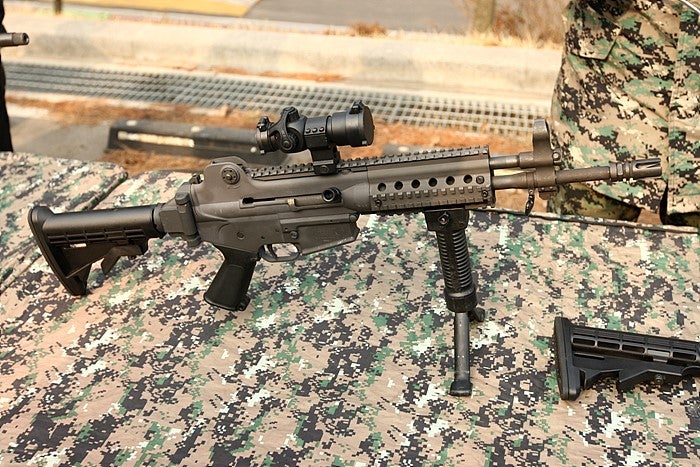
Figure 5. K2C [6] [7]. The upper picture shows an early version of K2C. The front gun uses rear sight removed K2 receiver and K1A lower receiver with AR stock and buffer tube receiver. The rear gun uses normal K2 lower and same version of the K2 upper receiver. The lower picture is a final version of K2C. This version is K2C A type which uses normal K2 upper and lower with AR stock. (http://rokmarineboy.tistory.com/1559)
S&T Motiv had tried to improve the K2 rifle without significantly changing the shape of the K2 rifle, similar to the AK5 from Sweden. The development result was the K2C(K2 Carbine). During early stages of development, they used K1A lower receivers with AR stock adapters, K2 upper receivers, flash hiders for K11 and 12-inch barrel (slightly thicker than the K2 barrel). Later, S&T Motiv used K2 lower receivers and two types of K2 upper receivers. One is a normal K2 upper receiver and the other has the rear sight removed.
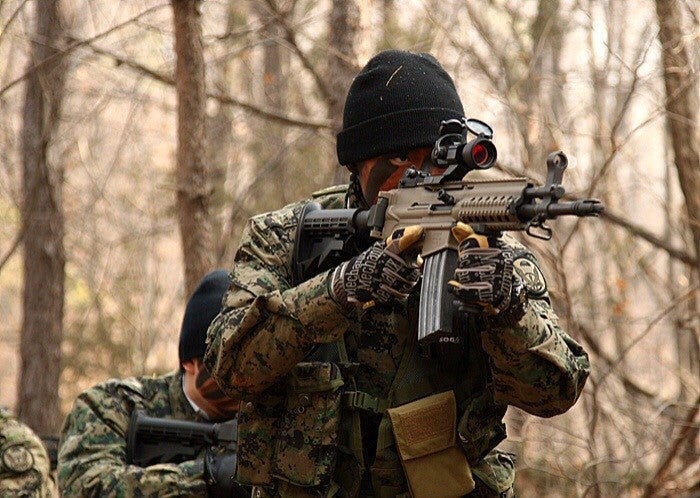
Figure 6. ROKA-SWC field test[8] This picture was taken during a field test. This rifle is K2C B type. A difference of K2C A type is B type removed the rear sight and uses a detachable rear sight. (http://bemil.chosun.com/nbrd/bbs/view.html?b_bbs_id=10159&pn=6&num=42904)
S&T Motiv made this rifle as a prototype and they didn’t expect this rifle to be sold to any other country. Fortunately, in 2012, K2C made some sales in Africa, Southeast Asia, and the Middle East. In 2014, Republic of Korea Army Special Warfare Command approved field tests and compared other rifles, for example, K1A, K2, and HK416. In field tests, the K2C was rated better than the K1A and had only some improvement requests. ROKA-SWC satisfied K2C rifle and wanted to replace K1A. However, it did not happen to replace K1A with this rifle.
K-2 procurement decision and operation evaluation of MND
In 2012, Congress still criticized the use of M2 carbines for the reserve army. At that time, the Korean Army had 340,000 M2 carbines in storage. The Ministry of Defense decided to procure additional K2 rifles to remove M2 carbine, and the new K2 began to be produced in 2013. S&T Motiv is convinced that the new K2 will produce an upgraded version of K2 which is installed K2C kits.
The MND received a small number of K2As and proceeded to field test them with a ROK infantry division. During the field evaluation, the MND determined that there was a limit to the existing method of mounting the rail kit to the screw hole, and decided to make flat top milling on the upper receiver instead of the rail kit.
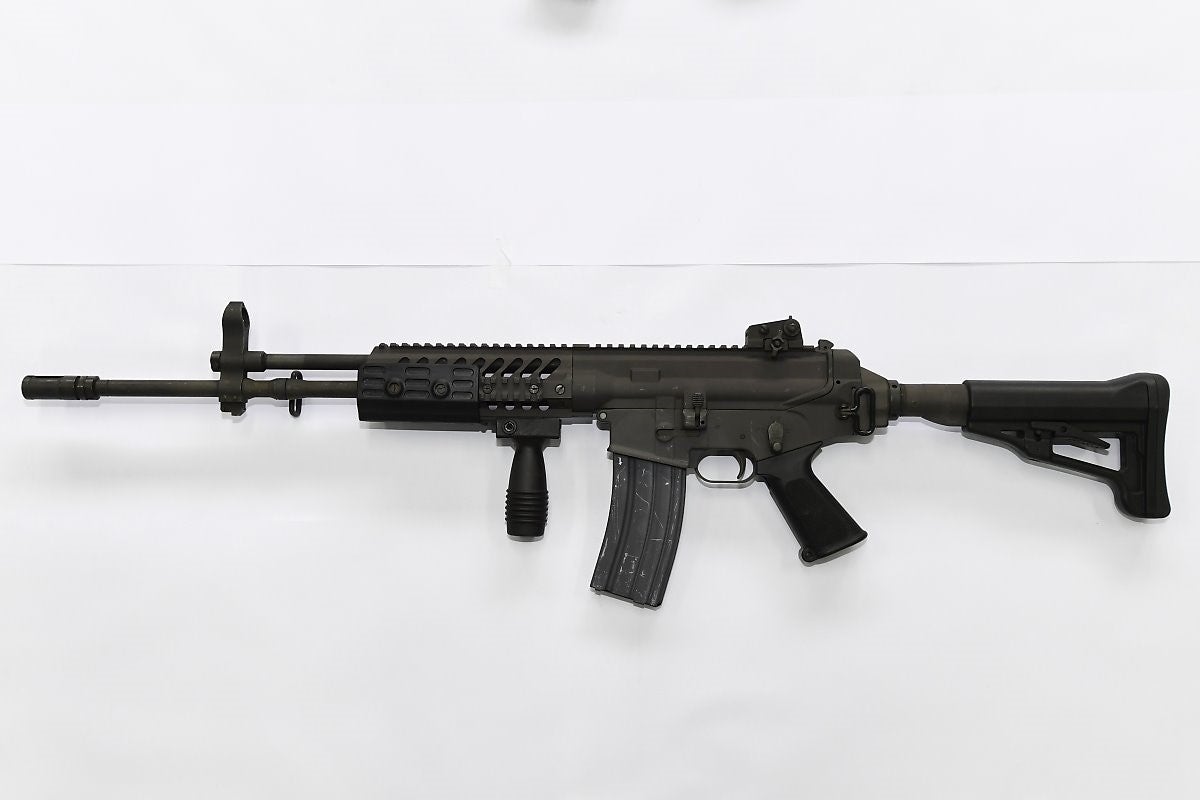
Figure. 8 K2C1 rifle[10] K2C1 rifle upgrades many things compared with K2C. Upper receiver milled Picatinny rail. K2C1 use kind of modular hand guard. There is a small piece of rail kit. Polymer heat shield and vertical grip will give for K2C1 user. Stock changed the similar shape of Magpul MOE stock. (http://www.kjclub.com/kr/board/exc_board_53/view/id/181720/page/5?&sst=wr_count_like&sod=asc)
The K2 rifle, which uses the flattop upper receiver and an aluminum handguard, is called K2C1. In 2016, 60,000 rifles were produced and the individual price was 1130000 KRW (=$ 1,040.70). The MND was no longer willing to buy K2, so S&T motiv had a lot of disappointment. Because they expected at least 100,000 units. However, the number of K2C1 is expected to increase because the defense standard has been changed from the existing K2 to K2C1, and the new K2 is produced every year for repair and loss compensation.
Next generation rifle and Next generation special purpose submachine gun
The MND knows that it will not be able to continue using K2 in future, and the ROKA-SWC and UDT/SEAL have consistently requested for the replacement of firearms by pointing out the aging of K1A. The Joint Chiefs of Staff (JCC) accepted the request for the replacement of K2 and K1A and announced the next special purpose submachine gun project and the next rifle project.
The next special purpose submachine gun project is a project to replace K1A used by Special Forces. 1,500 units are taken directly to foreign small arms company for special force brigades carrying out the Decapitation strike operation. The remaining 15,000 units for the Special Forces are scheduled to undergo domestic development.
The next rifle project is a project to replace the K2, which was approved at the end of 2016 and began its preliminary research in mid-2017. ROCs and RFIs of both projects have not been released to date.
So S & T Motive has started developing new firearms to win in this big project (Dasan Machineries Co., Ltd designated as a new gun supplier).S&T unveiled prototype guns called K2C-1,2 on ADEX 2017. The K2C-1 and 2 are an upgraded version of the K2C. Both guns use the Flattop upper receiver used by K2C1, a folding front sight and ambidextrous safety.

Figure 9. K2C-1[11] (https://www.thefirearmblog.com/blog/2017/11/20/question-stocks-st-motivs-k2c-2-k2c-1-variants-now-available-coyote-tan/)
For detailed information on the K2C-1, see the article that was posted earlier on TFB.

Figure 10. K2C-2[12] K2C-2 is not much different from K2C. (http://defence-blog.com/army/st-motiv-unveils-new-k2c-2-assault-rifle-at-adex-2017.html)
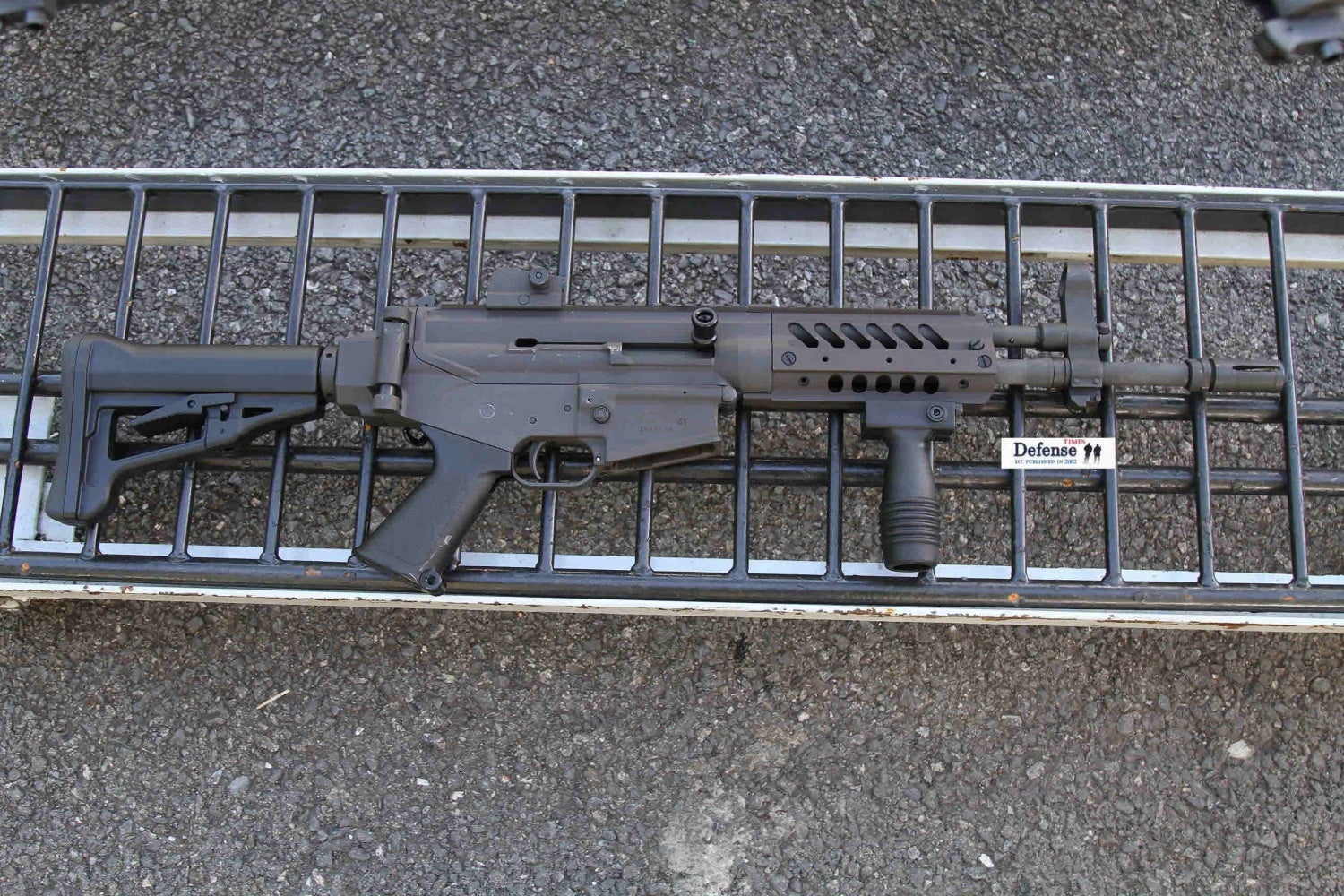
Figure 11. K2C1 Carbine. [13] (http://bemil.chosun.com/nbrd/bbs/view.html?b_bbs_id=10044&num=210847)
In addition, S & T made K2C1 carbine which uses a 12-inch barrel.
Conclusion
Next generation rifle and special purpose submachine gun will be outlined in approximately 2021. However, it is highly unlikely that detailed ROCs and RFIs will not be released under Ministry of National Defense security policies. But it will be quite interesting to compare the guns carried out by each company in the future international military exhibition.
 Your Privacy Choices
Your Privacy Choices
